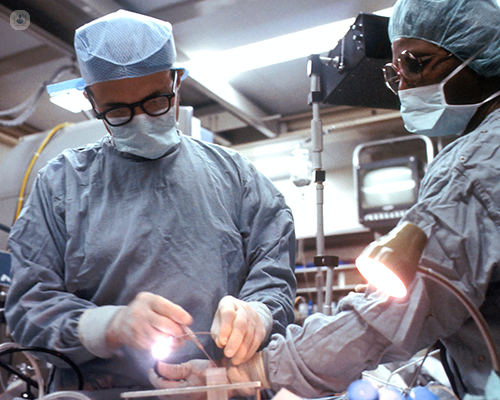Exploring transcatheter aortic valve implantation (TAVI)
Autore:Transcatheter aortic valve implantation (TAVI), or TAVR, is a minimally invasive procedure used to treat aortic valve stenosis, a condition in which the aortic valve becomes narrowed, restricting blood flow from the heart to the rest of the body.
Leading consultant interventional cardiologist Dr Mohamed Farag takes an in-depth look at TAVI and addresses some common questions patients may have about this procedure, in this article.

What is transcatheter aortic valve implantation (TAVI)?
TAVI is a procedure used to replace a narrowed aortic valve without the need for open-heart surgery. It involves inserting a replacement valve through a catheter (thin tube) and placing it within the diseased valve.
During TAVI, the replacement valve is typically delivered through a small incision in the groin or chest and guided to the heart through blood vessels using imaging techniques such as fluoroscopy and echocardiogram.
Once in position, the new valve is expanded, pushing aside the diseased valve leaflets and allowing blood to flow freely through the heart.
Who is a suitable candidate for TAVI?
TAVI is often recommended for individuals with severe symptomatic aortic stenosis who are considered high-risk or inoperable candidates for traditional open-heart surgery.
Candidates for TAVI undergo comprehensive evaluation by a multidisciplinary heart team, including cardiologists, cardiac surgeons, and imaging specialists, to determine the most appropriate treatment approach.
What are the benefits of TAVI?
Minimally invasive
TAVI is performed using small incisions, resulting in less trauma to the chest and shorter recovery times compared to traditional open-heart surgery.
Many patients experience faster postoperative recovery and shorter hospital stays following TAVI.
Effective treatment
TAVI has been shown to effectively relieve symptoms of aortic stenosis, such as chest pain, shortness of breath and fatigue, and improve overall quality of life for patients.
Clinical studies have demonstrated comparable outcomes between TAVI and surgical aortic valve replacement in terms of mortality and symptom relief.
What are the risks of TAVI?
While TAVI is generally considered safe, it carries certain risks, including bleeding, infection, stroke, and damage to the heart or blood vessels during the procedure.
The risk of complications may vary depending on factors such as patient age, overall health, and anatomy.
The long-term durability of TAVI valves is still being studied, and there may be a risk of valve degeneration or dysfunction over time.
Regular follow-up appointments with a healthcare provider are important to monitor valve function and detect any potential issues early.
What should patients consider before going ahead with TAVI?
TAVI has revolutionised the management of aortic valve disease and has provided new hope for patients who were previously considered ineligible for surgery. As with any medical procedure, it is essential for patients to discuss the risks, benefits, and alternatives of TAVI with their healthcare provider to make informed decisions about their treatment options.
If you’d like to find out more about the TAVI procedure, arrange a consultation via Dr Farag’s Top Doctors profile.


